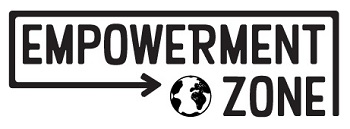 Would you agree that the most eco-friendly solution usually turns out to be the best choice for your health and your budget also? We find that making the safest choice for the planet is the safer path for people too, particularly when it comes to natural skin care, green cleaning and petrochemical plastic products.
Would you agree that the most eco-friendly solution usually turns out to be the best choice for your health and your budget also? We find that making the safest choice for the planet is the safer path for people too, particularly when it comes to natural skin care, green cleaning and petrochemical plastic products.With a simple decision on lunch boxes and how to pack a lunch, you can: help the planet by opting for long lasting and resource-efficient materials, reduce waste going to landfill, protect your health by avoiding toxic plastics, and save a little cash by reusing and buying in bulk.
Many Australian schools are trying to reduce rubbish by encouraging children to take home food scraps, use composting at school and use less plastic wraps. Our family is fortunate to live very close to our school, but not so fortunate to be woken at dawn each morning by the clean up crew--the crows! So there may even be an extra benefit for us from a waste-free lunch policy...a sleep in.
One of the nasties to avoid when choosing a lunch box, is Polyvinyl Chloride (PVC) - recognised by this symbol. Often on a soft shiny plastic lunch box (often the grey plastic inside) there is no label to tell you what it is, but it is more than likely PVC that can contain lead and phthalates.
"Children are particularly vulnerable to the harmful effects of toxic chemicals used in PVC. Recent studies have linked PVC flooring to increased rates of autism and asthma. Chemicals that evaporate or leech out of PVC products may contribute to developmental disorders and damage to the liver, central nervous, respiratory and reproductive systems."
Further, many environmental groups are calling for the banning of PVC because it releases dioxins during manufacturing and when it is burned, recycled or or disposed of in landfill. Both Wikipedia and CHEJ detail the dangers, including how highly toxic dioxins have been found to cause cancer in workers manufacturing PVC.
How to identify products with PVC
- Labelled with the word “vinyl” (e.g. vinyl ring binders)
- #3 recycling symbol or with the letters “V” or “PVC” underneath the recycling symbol
- Shiny flexible plastic inside and outside lunch boxes, back packs, clothing (such as raincoats) and waterproof mattress protectors.
- Don't buy the product if it is not labelled with the type of plastic or with specific statements that it is lead free and PVC free.
- Contact the manufacturer or retailer to ask what plastic the product is made of.
Biome also offers:
Goodbyn all-in-one lunchboxes with cool stickers
LunchBots stainless steel lunch boxes
4myearth sandwich wraps
Thermos
Klean Kanteen insulated wide mouth bottles
Bento boxes























